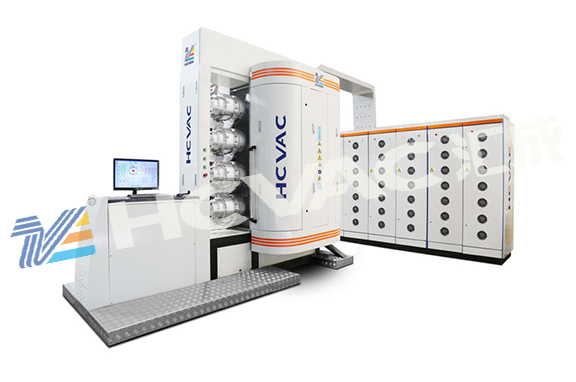The working principle of pvd coating machine ionization vacuum gauge, ionization vacuum gauge is a vacuum gauge that obtains pressure by ionizing gas molecules and measuring the number of ions (current). Its measurement vacuum is above 10-8 Pa, and it is widely used in the fields of high vacuum to ultra-high vacuum with excellent quantitative performance.

Ionization vacuum gauges can be divided into two types according to different ionization methods: one is the most widely used hot cathode ionization vacuum gauge that relies on the principle of high temperature cathode thermionic emission; the other is based on the principle of high voltage discharge in vacuum. Cold cathode ionization vacuum gauge.
The electrons in a hot cathode ionization gauge that ionize gas molecules are obtained by heating a filament. Hot cathode ionization vacuum gauges have certain limits for measuring vacuum. Soft X-rays are emitted when thermionic electrons hit the anode mesh. After the soft X-rays irradiate the ion collector, the ion collector emits photoelectrons. The emitted photoelectrons have the same effect as ion incidence, which is called pseudo-ion current. Therefore, there is a residual current in the vacuum gauge that is independent of the pressure, thus erroneously evaluating the actual vacuum degree. A schematic diagram of residual current generation is shown in Figure 2. In addition, after the gas molecules adsorbed on the anode net are hit by electrons, they will also be detected as ions, which also interferes with the measurement accuracy of the vacuum gauge.
Cold cathode ionization vacuum gauges utilize the phenomenon of high voltage discharge in a vacuum, also known as cold gauges. The cold cathode emits less electrons than the hot cathode, and a voltage is simply applied between the anode and cathode. If the pressure is lower than 0.1Pa, the discharge will not continue. By applying a magnetic field from the outside, the flight distance of the electrons can be increased to achieve continuous discharge at lower pressures.
Electrons emitted from the cathode are spiraled by the Lorentz force and bound in a magnetic field. The spiral motion greatly increases the flight distance of the electrons. The electrons are eventually captured by the anode, but before being captured, they collide with gas molecules several times, creating a plasma state between the two cathodes. The electrons in the plasma, like the electrons emitted by the cathode, will make a spiral motion, but the cations have a larger mass and a larger radius of spiral motion, and are captured by the cathode in a short period of time, and secondary emission electrons are generated. The electrons generated by the gas ionization and the secondary electrons emitted by the cathode also move between the cathode plates for a long time, so that the ionization process is carried out in a chain.
Cold cathode discharge can occur at a pressure of 0.1Pa. The number of ions captured at the cathode is proportional to the pressure and the ionized cross-sectional area of the gas molecules. If you know the scaling factor of ionic current and pressure, you can know the pressure value. The ionization cross-sectional area varies with gas molecules, and the proportionality factor also varies with gas molecules. The vacuum gauges on the market generally measure the proportional coefficient with dry air or nitrogen as the standard.
The measurement performance of the cold cathode ionization vacuum gauge of the
pvd coating machine is stable, and it can be applied to the measurement in the field of high vacuum. At the same time, because it is a cold cathode ionization method, there is no need to worry about the burning of the electrode.
The disadvantages of cold cathode ionization vacuum gauges are:
(1) The stability of discharge is insufficient;
(2) The amount of electrons released from the cathode is seriously affected by surface contamination;
(3) The vacuum gauge itself has a strong magnetic field, and it is necessary to consider the position where it is installed on the equipment.



